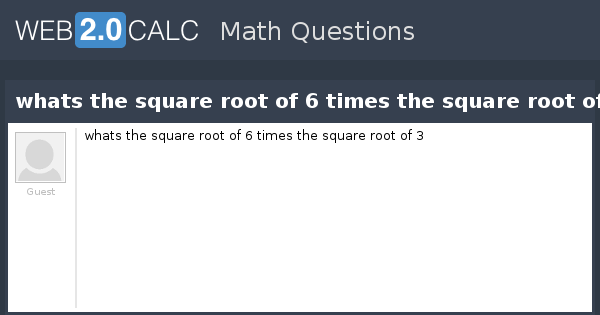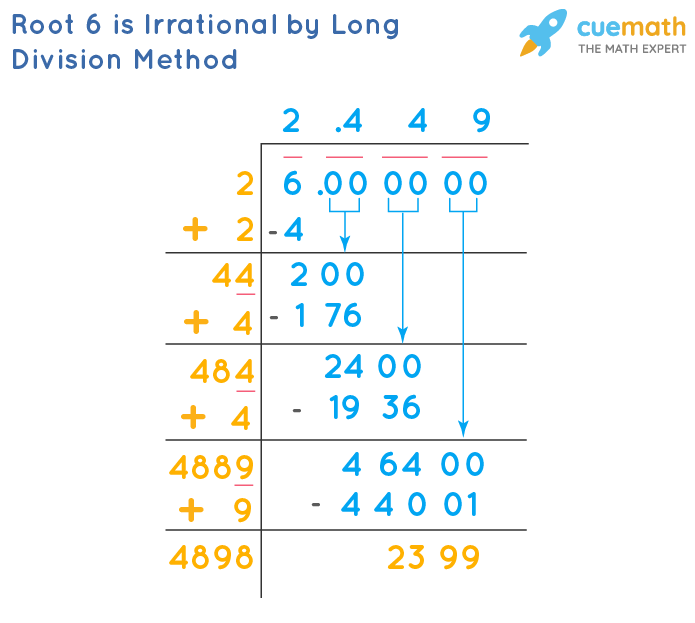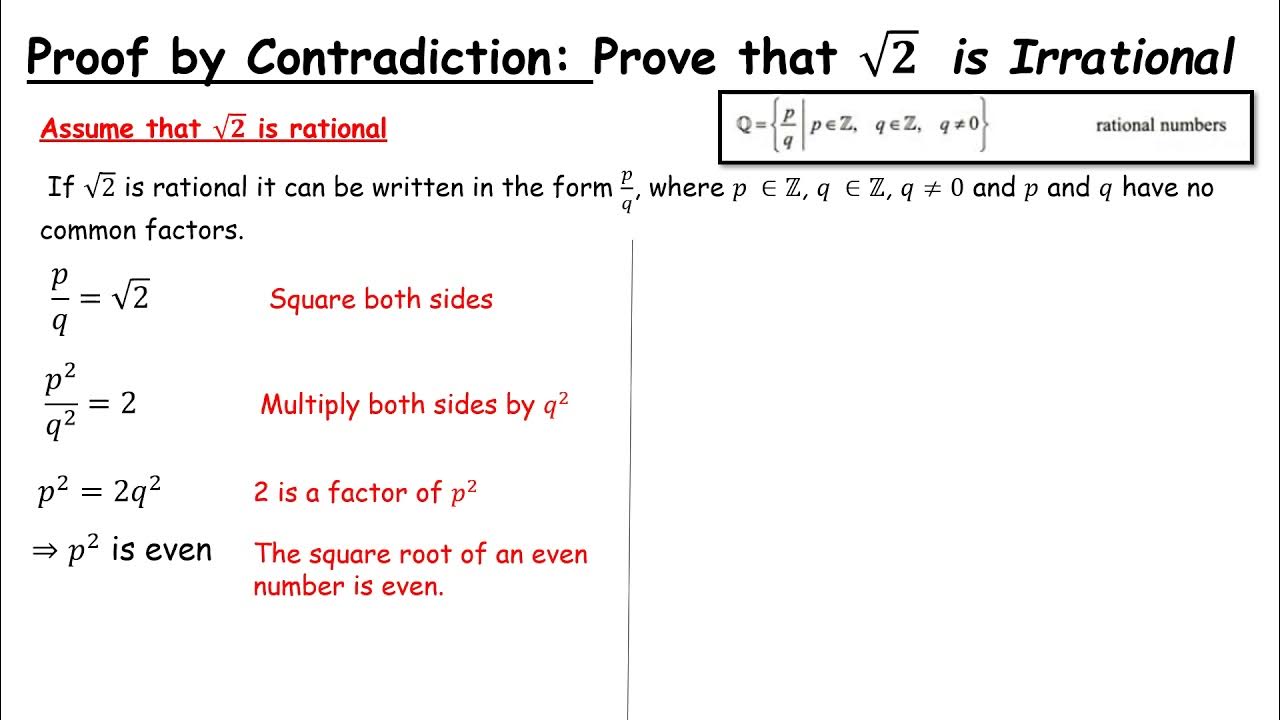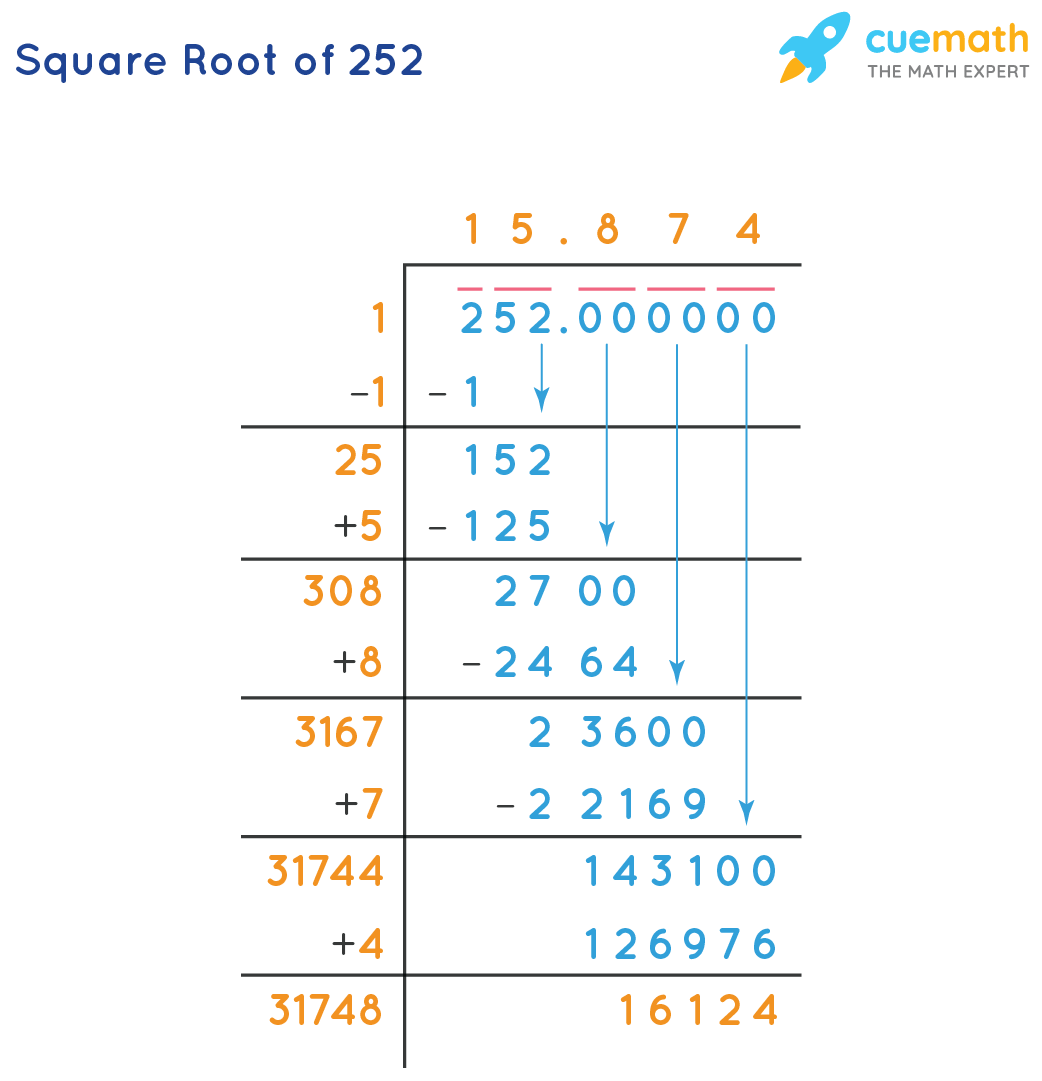Topic how to add square root: Learn how to add square root values with ease in this comprehensive guide. Whether you are dealing with simple or complex radicands, we provide clear steps, practical examples, and useful tips to help you master the technique of adding square roots efficiently. Enhance your math skills and solve problems with confidence!
Table of Content
- Adding Square Roots
- Introduction to Adding Square Roots
- Basic Principles of Square Roots
- Adding Square Roots with the Same Radicand
- Adding Square Roots with Different Radicands
- Simplifying Square Roots
- Combining Like Terms
- Examples of Adding Square Roots
- Common Mistakes to Avoid
- Advanced Techniques for Adding Square Roots
- Applications of Adding Square Roots
- Practice Problems and Solutions
- Conclusion and Summary
- YOUTUBE:
Adding Square Roots
Adding square roots can be straightforward when the radicands (the numbers inside the square roots) are the same. However, when the radicands differ, the process becomes slightly more complex.
Steps to Add Square Roots with the Same Radicand
- Identify the common radicand.
- Combine the coefficients (numbers outside the square root).
- Write the result as a single square root.
Example:
\[ 3\sqrt{5} + 2\sqrt{5} = (3 + 2)\sqrt{5} = 5\sqrt{5} \]
Steps to Add Square Roots with Different Radicands
- Simplify each square root if possible.
- Check if any simplified square roots have the same radicand.
- Combine the coefficients of square roots with the same radicand.
- Write the result as a combination of simplified square roots.
Example:
\[ \sqrt{50} + 2\sqrt{8} \]
- Simplify the square roots: \[ \sqrt{50} = \sqrt{25 \cdot 2} = 5\sqrt{2} \] and \[ 2\sqrt{8} = 2\sqrt{4 \cdot 2} = 2 \cdot 2\sqrt{2} = 4\sqrt{2} \]
- Combine like terms: \[ 5\sqrt{2} + 4\sqrt{2} = (5 + 4)\sqrt{2} = 9\sqrt{2} \]
General Tips
- Only square roots with the same radicand can be directly added.
- Simplify the square roots as much as possible to find common radicands.
- Use the distributive property to combine like terms.

READ MORE:
Introduction to Adding Square Roots
Adding square roots is a fundamental concept in algebra that often appears in various mathematical problems. Understanding how to add square roots can simplify complex expressions and enhance your problem-solving skills.
Square roots represent a number that, when multiplied by itself, gives the original number. For example, the square root of 9 is 3 because \(3 \times 3 = 9\).
When adding square roots, it's crucial to consider the following steps:
- Identify Like Radicands: Only square roots with the same radicand (the number inside the square root) can be added directly. For instance, \(\sqrt{2}\) can be added to \(3\sqrt{2}\) but not to \(\sqrt{3}\).
- Simplify the Radicands: Before adding, simplify the square roots if possible. This might involve breaking down the radicand into its prime factors. For example, \(\sqrt{18}\) can be simplified to \(3\sqrt{2}\) because \(18 = 9 \times 2\) and \(\sqrt{9} = 3\).
- Combine Like Terms: After simplifying, combine the coefficients (the numbers in front of the square root) of like terms. For example, \(2\sqrt{3} + 5\sqrt{3} = (2 + 5)\sqrt{3} = 7\sqrt{3}\).
Consider this example:
\[
\begin{aligned}
&\text{Add } 2\sqrt{8} \text{ and } 3\sqrt{2}:\\
&2\sqrt{8} = 2\sqrt{4 \times 2} = 2 \times 2\sqrt{2} = 4\sqrt{2},\\
&\text{Now combine with } 3\sqrt{2}:\\
&4\sqrt{2} + 3\sqrt{2} = (4 + 3)\sqrt{2} = 7\sqrt{2}.
\end{aligned}
\]
By following these steps, you can accurately and efficiently add square roots, leading to a better understanding and greater ease in solving algebraic expressions involving square roots.
Basic Principles of Square Roots
Square roots are a fundamental concept in mathematics, representing a value that, when multiplied by itself, yields the original number. Understanding the basic principles of square roots is essential for adding and manipulating them effectively.
The notation for a square root is \(\sqrt{}\). For example, \(\sqrt{16} = 4\) because \(4 \times 4 = 16\). The number inside the square root symbol is called the radicand.
Here are the key principles of square roots:
- Non-Negative Results: The square root of a non-negative number is always non-negative. For instance, \(\sqrt{25} = 5\) and \(\sqrt{0} = 0\). Negative numbers do not have real square roots.
- Product Property: The square root of a product is equal to the product of the square roots of the factors. This is expressed as: \[ \sqrt{a \times b} = \sqrt{a} \times \sqrt{b} \] For example, \(\sqrt{36} = \sqrt{9 \times 4} = \sqrt{9} \times \sqrt{4} = 3 \times 2 = 6\).
- Quotient Property: The square root of a quotient is equal to the quotient of the square roots of the numerator and the denominator. This is expressed as: \[ \sqrt{\frac{a}{b}} = \frac{\sqrt{a}}{\sqrt{b}} \] For example, \(\sqrt{\frac{25}{4}} = \frac{\sqrt{25}}{\sqrt{4}} = \frac{5}{2}\).
- Simplifying Square Roots: Square roots can often be simplified by factoring out perfect squares from the radicand. For instance, \(\sqrt{50} = \sqrt{25 \times 2} = \sqrt{25} \times \sqrt{2} = 5\sqrt{2}\).
Understanding these basic principles helps in performing various operations with square roots, including addition, subtraction, multiplication, and division. These principles are foundational for more advanced mathematical concepts and problem-solving techniques.
Adding Square Roots with the Same Radicand
Adding square roots with the same radicand is a straightforward process that involves combining the coefficients of the square roots. Here are the detailed steps to add square roots with the same radicand:
- Identify the Radicand: Ensure that the square roots you are adding have the same radicand (the number inside the square root symbol). For example, in \(3\sqrt{7}\) and \(5\sqrt{7}\), the radicand is 7.
- Combine the Coefficients: Add the coefficients (the numbers outside the square root symbol) of the square roots. This is similar to adding like terms in algebra. For instance: \[ 3\sqrt{7} + 5\sqrt{7} = (3 + 5)\sqrt{7} = 8\sqrt{7} \] Here, 3 and 5 are the coefficients, and they are added together while the radicand remains the same.
- Write the Result: After combining the coefficients, write the result as a single square root expression. For example, \(8\sqrt{7}\) is the result of adding \(3\sqrt{7}\) and \(5\sqrt{7}\).
Consider the following example for better understanding:
\[
2\sqrt{3} + 4\sqrt{3} = (2 + 4)\sqrt{3} = 6\sqrt{3}
\]
In this example, the radicand is 3, and the coefficients 2 and 4 are added to get 6. Therefore, \(2\sqrt{3} + 4\sqrt{3} = 6\sqrt{3}\).
Here is another example with more terms:
\[
\begin{aligned}
5\sqrt{11} + 3\sqrt{11} + 7\sqrt{11} &= (5 + 3 + 7)\sqrt{11} \\
&= 15\sqrt{11}
\end{aligned}
\]
In this case, the radicand is 11, and the coefficients 5, 3, and 7 are added to get 15. Thus, \(5\sqrt{11} + 3\sqrt{11} + 7\sqrt{11} = 15\sqrt{11}\).
By following these steps, you can easily add square roots with the same radicand, simplifying expressions and solving problems more efficiently.
Adding Square Roots with Different Radicands
Adding square roots with different radicands is a more complex process than adding square roots with the same radicand. When the radicands differ, the square roots cannot be added directly. Instead, you need to simplify the square roots and look for common radicands. Here are the steps to follow:
- Simplify Each Square Root: Break down each square root into its prime factors and simplify them if possible. For example: \[ \sqrt{18} = \sqrt{9 \times 2} = 3\sqrt{2} \] \[ \sqrt{50} = \sqrt{25 \times 2} = 5\sqrt{2} \]
- Check for Common Radicands: After simplifying, check if any of the square roots now have the same radicand. For instance, in the examples above, both square roots simplify to expressions with the radicand 2: \(3\sqrt{2}\) and \(5\sqrt{2}\).
- Combine Like Terms: Add the coefficients of the square roots that have the same radicand. For the example above: \[ 3\sqrt{2} + 5\sqrt{2} = (3 + 5)\sqrt{2} = 8\sqrt{2} \]
- Write the Result: If there are no common radicands after simplifying, the square roots cannot be combined and should be written as separate terms. For instance: \[ \sqrt{3} + \sqrt{5} \text{ cannot be simplified further} \]
Consider the following example:
\[
\sqrt{8} + \sqrt{18}
\]
First, simplify each square root:
\[
\sqrt{8} = \sqrt{4 \times 2} = 2\sqrt{2}
\]
\[
\sqrt{18} = \sqrt{9 \times 2} = 3\sqrt{2}
\]
Now combine the like terms:
\[
2\sqrt{2} + 3\sqrt{2} = (2 + 3)\sqrt{2} = 5\sqrt{2}
\]
Another example:
\[
\sqrt{12} + \sqrt{27}
\]
First, simplify each square root:
\[
\sqrt{12} = \sqrt{4 \times 3} = 2\sqrt{3}
\]
\[
\sqrt{27} = \sqrt{9 \times 3} = 3\sqrt{3}
\]
Now combine the like terms:
\[
2\sqrt{3} + 3\sqrt{3} = (2 + 3)\sqrt{3} = 5\sqrt{3}
\]
By following these steps, you can add square roots with different radicands by simplifying them and combining like terms. This approach helps in handling complex expressions and solving mathematical problems more effectively.

Simplifying Square Roots
Simplifying square roots is an essential skill in algebra that makes it easier to work with and manipulate square root expressions. The goal is to express the square root in its simplest form. Here are the steps to simplify square roots:
- Factor the Radicand: Begin by factoring the radicand (the number inside the square root) into its prime factors. For example: \[ \sqrt{72} = \sqrt{2 \times 2 \times 2 \times 3 \times 3} \]
- Pair the Factors: Identify and pair the prime factors. Each pair of identical factors can be taken out of the square root as a single factor. For instance: \[ \sqrt{2 \times 2 \times 2 \times 3 \times 3} = \sqrt{(2 \times 2) \times 2 \times (3 \times 3)} = \sqrt{4 \times 2 \times 9} \]
- Take the Square Root of Each Pair: For each pair of factors, take the square root and move it outside the radical sign. For example: \[ \sqrt{4 \times 2 \times 9} = 2 \times 3 \times \sqrt{2} = 6\sqrt{2} \]
- Combine the Simplified Terms: If there are multiple terms, combine them into a single expression. For example, if you have: \[ \sqrt{50} + \sqrt{18} \] First simplify each term: \[ \sqrt{50} = \sqrt{25 \times 2} = 5\sqrt{2} \] \[ \sqrt{18} = \sqrt{9 \times 2} = 3\sqrt{2} \] Then combine the like terms: \[ 5\sqrt{2} + 3\sqrt{2} = (5 + 3)\sqrt{2} = 8\sqrt{2} \]
Here are some additional examples to illustrate the process:
\[
\sqrt{32} = \sqrt{2 \times 2 \times 2 \times 2 \times 2} = \sqrt{(2 \times 2) \times (2 \times 2) \times 2} = \sqrt{4 \times 4 \times 2} = 2 \times 2 \sqrt{2} = 4\sqrt{2}
\]
\[
\sqrt{45} = \sqrt{9 \times 5} = \sqrt{9} \times \sqrt{5} = 3\sqrt{5}
\]
By following these steps, you can simplify square roots effectively, making it easier to perform arithmetic operations and solve algebraic expressions involving square roots.
Combining Like Terms
Combining like terms is a fundamental algebraic process that simplifies expressions by adding or subtracting terms with the same variable or radicand. This is essential when working with square roots. Here are the steps to combine like terms effectively:
- Identify Like Terms: Like terms are terms that have the same variable or, in the case of square roots, the same radicand. For example, \(3\sqrt{5}\) and \(2\sqrt{5}\) are like terms because they both contain \(\sqrt{5}\).
- Combine the Coefficients: Add or subtract the coefficients (the numbers in front of the variables or square roots) of the like terms. For example: \[ 3\sqrt{5} + 2\sqrt{5} = (3 + 2)\sqrt{5} = 5\sqrt{5} \] Similarly: \[ 7x - 3x = (7 - 3)x = 4x \]
- Simplify the Expression: After combining the like terms, write the expression in its simplified form. For example, if you have: \[ 4\sqrt{3} + 3\sqrt{2} - 2\sqrt{3} \] First combine the like terms: \[ (4\sqrt{3} - 2\sqrt{3}) + 3\sqrt{2} = 2\sqrt{3} + 3\sqrt{2} \]
- Check for Further Simplification: Sometimes, after combining like terms, you might be able to simplify the expression further. For example: \[ \sqrt{50} + \sqrt{8} \] First, simplify each square root: \[ \sqrt{50} = 5\sqrt{2} \] \[ \sqrt{8} = 2\sqrt{2} \] Then combine the like terms: \[ 5\sqrt{2} + 2\sqrt{2} = (5 + 2)\sqrt{2} = 7\sqrt{2} \]
Here are additional examples to illustrate combining like terms:
\[
6\sqrt{7} - 2\sqrt{7} = (6 - 2)\sqrt{7} = 4\sqrt{7}
\]
\[
3x^2 + 5x^2 - x^2 = (3 + 5 - 1)x^2 = 7x^2
\]
By following these steps, you can efficiently combine like terms, which helps in simplifying expressions and solving algebraic equations involving square roots and other variables.
Examples of Adding Square Roots
Adding square roots involves combining like terms by ensuring the radicands are the same. Here are detailed examples to illustrate the process step by step:
- Example 1: Simple Addition
Consider the following expression:
\[
3\sqrt{5} + 4\sqrt{5}
\]
Since the radicands are the same, combine the coefficients:
\[
3\sqrt{5} + 4\sqrt{5} = (3 + 4)\sqrt{5} = 7\sqrt{5}
\] - Example 2: Addition with Simplification
Consider the following expression:
\[
\sqrt{18} + \sqrt{50}
\]
First, simplify each square root:
\[
\sqrt{18} = \sqrt{9 \times 2} = 3\sqrt{2}
\]
\[
\sqrt{50} = \sqrt{25 \times 2} = 5\sqrt{2}
\]
Now, combine the like terms:
\[
3\sqrt{2} + 5\sqrt{2} = (3 + 5)\sqrt{2} = 8\sqrt{2}
\] - Example 3: Addition with Different Radicands
Consider the following expression:
\[
\sqrt{12} + \sqrt{27}
\]
First, simplify each square root:
\[
\sqrt{12} = \sqrt{4 \times 3} = 2\sqrt{3}
\]
\[
\sqrt{27} = \sqrt{9 \times 3} = 3\sqrt{3}
\]
Now, combine the like terms:
\[
2\sqrt{3} + 3\sqrt{3} = (2 + 3)\sqrt{3} = 5\sqrt{3}
\] - Example 4: Addition with No Common Radicand
Consider the following expression:
\[
\sqrt{2} + \sqrt{3}
\]
Since the radicands are different and cannot be simplified to the same radicand, they cannot be combined:
\[
\sqrt{2} + \sqrt{3} \text{ remains as it is}
\] - Example 5: Mixed Radicands
Consider the following expression:
\[
2\sqrt{3} + \sqrt{12} + 4\sqrt{3}
\]
First, simplify the square root:
\[
\sqrt{12} = \sqrt{4 \times 3} = 2\sqrt{3}
\]
Now, combine the like terms:
\[
2\sqrt{3} + 2\sqrt{3} + 4\sqrt{3} = (2 + 2 + 4)\sqrt{3} = 8\sqrt{3}
\]
These examples demonstrate how to add square roots by simplifying and combining like terms, ensuring that the radicands are the same for effective addition.
Common Mistakes to Avoid
When adding square roots, it is important to be aware of common mistakes to ensure accurate calculations. Below are some of the most frequent errors and how to avoid them:
- Forgetting to Simplify Square Roots:
Always simplify square roots before adding them. For example:
\(\sqrt{50} + \sqrt{18} \neq \sqrt{68}\)
Simplify each term first:
\(\sqrt{50} = \sqrt{25 \times 2} = 5\sqrt{2}\)
\(\sqrt{18} = \sqrt{9 \times 2} = 3\sqrt{2}\)
Then add:
\(5\sqrt{2} + 3\sqrt{2} = 8\sqrt{2}\)
- Adding Square Roots with Different Radicands:
Square roots with different radicands cannot be directly added. For example:
\(\sqrt{8} + \sqrt{32} \neq \sqrt{40}\)
Simplify each term first:
\(\sqrt{8} = \sqrt{4 \times 2} = 2\sqrt{2}\)
\(\sqrt{32} = \sqrt{16 \times 2} = 4\sqrt{2}\)
Then add:
\(2\sqrt{2} + 4\sqrt{2} = 6\sqrt{2}\)
- Incorrectly Combining Unlike Terms:
Ensure you only combine like terms (same radicand). For example:
\(\sqrt{3} + \sqrt{12} + \sqrt{27}\)
Simplify each term:
\(\sqrt{12} = \sqrt{4 \times 3} = 2\sqrt{3}\)
\(\sqrt{27} = \sqrt{9 \times 3} = 3\sqrt{3}\)
Then add like terms:
\(\sqrt{3} + 2\sqrt{3} + 3\sqrt{3} = 6\sqrt{3}\)
- Ignoring the Order of Operations:
Follow the correct order of operations. For example:
\(\sqrt{4 + 9} \neq \sqrt{4} + \sqrt{9}\)
Calculate inside the square root first:
\(\sqrt{4 + 9} = \sqrt{13}\)
- Misinterpreting the Square Root Symbol:
Remember that \(\sqrt{x^2} = |x|\), not \(x\). For example:
\(\sqrt{(-3)^2} = | -3 | = 3\)
By avoiding these common mistakes, you can ensure accurate addition of square roots in your calculations.

Advanced Techniques for Adding Square Roots
When dealing with square roots, advanced techniques are essential for simplifying and accurately adding terms. Here are some advanced methods for adding square roots:
1. Rationalizing the Denominator
Rationalizing the denominator involves removing the square root from the denominator of a fraction. This technique is crucial when the square root terms are in fractional form.
- For example, to rationalize \(\frac{1}{\sqrt{2}}\), multiply by \(\frac{\sqrt{2}}{\sqrt{2}}\) to get \(\frac{\sqrt{2}}{2}\).
2. Using Conjugates
Conjugates are used to simplify expressions involving square roots, especially in complex fractions.
- Given \(\frac{1}{\sqrt{a} + \sqrt{b}}\), multiply the numerator and denominator by the conjugate \(\sqrt{a} - \sqrt{b}\) to simplify.
3. Simplifying Nested Radicals
Nested radicals are expressions with a square root inside another square root. Simplifying these can help in adding square roots.
- For example, \(\sqrt{5 + 2\sqrt{6}}\) can be simplified using specific identities.
4. Factoring Inside the Radical
Factoring expressions inside the square root can make adding roots easier.
- For instance, \(\sqrt{50} + \sqrt{18}\) can be simplified to \(5\sqrt{2} + 3\sqrt{2}\), and then added as \(8\sqrt{2}\).
5. Using Algebraic Identities
Certain algebraic identities can help simplify the addition of square roots.
- Example: \(\sqrt{a} + \sqrt{b}\) can sometimes be expressed in a simpler form using identities like \(\sqrt{a} + \sqrt{b} = \sqrt{a + b + 2\sqrt{ab}}\).
6. Simplifying Complex Expressions
For more complex expressions, break down each term and simplify before adding.
- Break down each term: \(\sqrt{27} + \sqrt{12}\) becomes \(3\sqrt{3} + 2\sqrt{3}\).
- Combine like terms: \(3\sqrt{3} + 2\sqrt{3} = 5\sqrt{3}\).
7. Using Numerical Approximations
When exact values are not necessary, approximate the square roots to decimal values for easier addition.
- For example, \(\sqrt{2} \approx 1.414\), \(\sqrt{3} \approx 1.732\). Adding these gives \(1.414 + 1.732 \approx 3.146\).
8. Employing Technology
Advanced calculators and software can handle complex square root additions efficiently.
- Graphing calculators and computer algebra systems (CAS) can simplify and add square roots with ease.
By mastering these advanced techniques, you can handle a wide range of problems involving the addition of square roots with confidence and precision.
Applications of Adding Square Roots
Understanding the applications of adding square roots is essential in various fields. Below are some practical scenarios where adding square roots is used:
1. Geometry and Construction
In geometry, square roots are often used to calculate the lengths of sides in right triangles using the Pythagorean theorem. This principle extends to construction where measurements of diagonal distances are needed, such as determining the length of a diagonal brace in a rectangular frame.
For example, to find the diagonal length of a rectangular room with sides of lengths 6 feet and 8 feet:
\[
\text{Diagonal} = \sqrt{6^2 + 8^2} = \sqrt{36 + 64} = \sqrt{100} = 10 \text{ feet}
\]
2. Physics and Engineering
Square roots are crucial in physics, especially in formulas involving acceleration, force, and energy. For instance, in kinematics, the time \( t \) it takes for an object to fall from a height \( h \) under gravity is given by:
\[
t = \frac{\sqrt{2h}}{g}
\]
Where \( g \) is the acceleration due to gravity. Adding square roots becomes necessary when calculating combined effects, such as total energy in a system.
3. Finance
In finance, the volatility of stock prices is assessed using standard deviation, which involves the square root of variance. For instance, if the variance of returns is \( \sigma^2 \), the standard deviation \( \sigma \) is:
\[
\sigma = \sqrt{\sigma^2}
\]
When combining multiple stocks, the overall volatility requires adding these square roots in the context of portfolio risk management.
4. Distance Calculation in Navigation
In navigation, especially in aviation and maritime contexts, the distance between two points is calculated using the distance formula derived from the Pythagorean theorem. For points \((x_1, y_1)\) and \((x_2, y_2)\) in a plane:
\[
D = \sqrt{(x_2 - x_1)^2 + (y_2 - y_1)^2}
\]
When summing multiple distances, adding square roots is necessary to get the total distance traveled.
5. Computer Science and Cryptography
In computer algorithms, particularly in cryptography, square roots are used in complex computations involving key generation and encryption. For example, RSA encryption involves operations with prime numbers and their square roots to secure data transmission.
6. Medical Imaging
In medical imaging techniques such as MRI and CT scans, square roots are used to reconstruct images from the raw data obtained from scans. This involves adding square roots when compiling multiple image slices to form a complete 3D model of the scanned area.
In summary, adding square roots is a fundamental operation that finds applications in diverse fields such as geometry, physics, finance, navigation, computer science, and medical imaging. Understanding these applications enhances our ability to solve real-world problems effectively.
Practice Problems and Solutions
Below are several practice problems along with their step-by-step solutions for adding square roots. Use these examples to enhance your understanding and proficiency.
Problem 1
Add the square roots: \(\sqrt{18} + \sqrt{8}\)
- Simplify each square root:
- \(\sqrt{18} = \sqrt{9 \cdot 2} = 3\sqrt{2}\)
- \(\sqrt{8} = \sqrt{4 \cdot 2} = 2\sqrt{2}\)
- Add the simplified square roots:
\(3\sqrt{2} + 2\sqrt{2} = 5\sqrt{2}\)
Problem 2
Add the square roots: \(2\sqrt{5} + 3\sqrt{5}\)
- Since the radicands are the same, simply add the coefficients:
\(2\sqrt{5} + 3\sqrt{5} = 5\sqrt{5}\)
Problem 3
Add the square roots: \(\sqrt{12} + \sqrt{27}\)
- Simplify each square root:
- \(\sqrt{12} = \sqrt{4 \cdot 3} = 2\sqrt{3}\)
- \(\sqrt{27} = \sqrt{9 \cdot 3} = 3\sqrt{3}\)
- Add the simplified square roots:
\(2\sqrt{3} + 3\sqrt{3} = 5\sqrt{3}\)
Problem 4
Add the square roots: \(4\sqrt{2} + 5\sqrt{3}\)
- Since the radicands are different, the expression cannot be simplified further:
\(4\sqrt{2} + 5\sqrt{3}\)
Problem 5
Add the square roots: \(2\sqrt{18} + 5\sqrt{8}\)
- Simplify each square root:
- \(2\sqrt{18} = 2 \cdot 3\sqrt{2} = 6\sqrt{2}\)
- \(5\sqrt{8} = 5 \cdot 2\sqrt{2} = 10\sqrt{2}\)
- Add the simplified square roots:
\(6\sqrt{2} + 10\sqrt{2} = 16\sqrt{2}\)
Problem 6
Add the square roots: \(3\sqrt{75} + 2\sqrt{48}\)
- Simplify each square root:
- \(3\sqrt{75} = 3 \cdot 5\sqrt{3} = 15\sqrt{3}\)
- \(2\sqrt{48} = 2 \cdot 4\sqrt{3} = 8\sqrt{3}\)
- Add the simplified square roots:
\(15\sqrt{3} + 8\sqrt{3} = 23\sqrt{3}\)
Conclusion and Summary
In this article, we have explored various aspects of adding square roots, from basic principles to advanced techniques. Let's summarize the key points discussed:
- Understanding Square Roots: Square roots represent a value that, when multiplied by itself, gives the original number. For example, the square root of 9 is 3 because \(3 \times 3 = 9\).
- Basic Principles: Adding square roots is straightforward when they have the same radicand (the number inside the square root). For instance, \(\sqrt{a} + \sqrt{a} = 2\sqrt{a}\).
- Adding Square Roots with the Same Radicand: When square roots share the same radicand, you can directly add their coefficients. For example, \(3\sqrt{2} + 4\sqrt{2} = 7\sqrt{2}\).
- Adding Square Roots with Different Radicands: If the radicands differ, simplify the square roots first if possible. For example, \(\sqrt{8} + \sqrt{2}\) can be simplified to \(2\sqrt{2} + \sqrt{2} = 3\sqrt{2}\).
- Simplifying Square Roots: Simplification involves expressing the square root in its simplest form. For instance, \(\sqrt{50}\) simplifies to \(5\sqrt{2}\).
- Combining Like Terms: Only square roots with the same radicands can be combined. For example, \(2\sqrt{3} + 5\sqrt{3} = 7\sqrt{3}\), but \(2\sqrt{3} + 5\sqrt{5}\) cannot be combined.
- Advanced Techniques: Techniques such as rationalizing denominators and using algebraic identities can help in more complex additions.
- Applications: Adding square roots is crucial in various fields including geometry, physics, and engineering, where precise calculations involving roots are required.
By mastering these concepts, you can handle any problem involving the addition of square roots with confidence. Practice is key to gaining proficiency, so be sure to work through various problems to solidify your understanding.
In conclusion, adding square roots may seem challenging at first, but with a solid grasp of the principles and techniques, it becomes a manageable task. Continue practicing and exploring more advanced applications to further enhance your mathematical skills.

Cộng và Trừ Căn Bậc Hai
READ MORE:
Cách Cộng và Trừ Căn Bậc Hai












